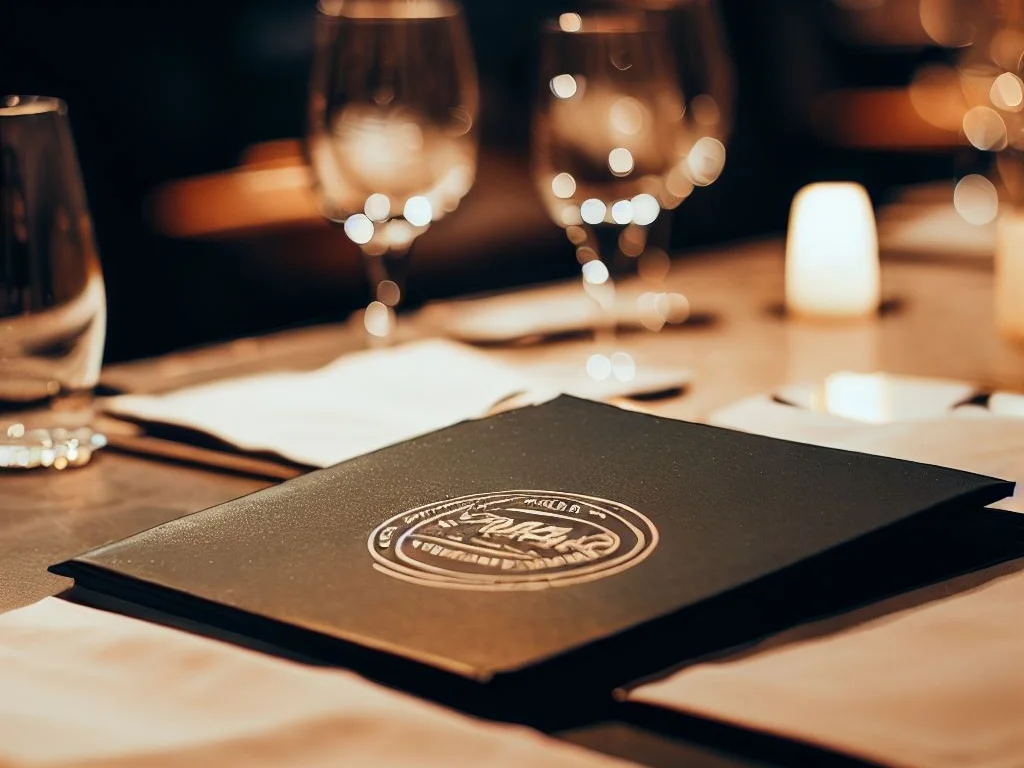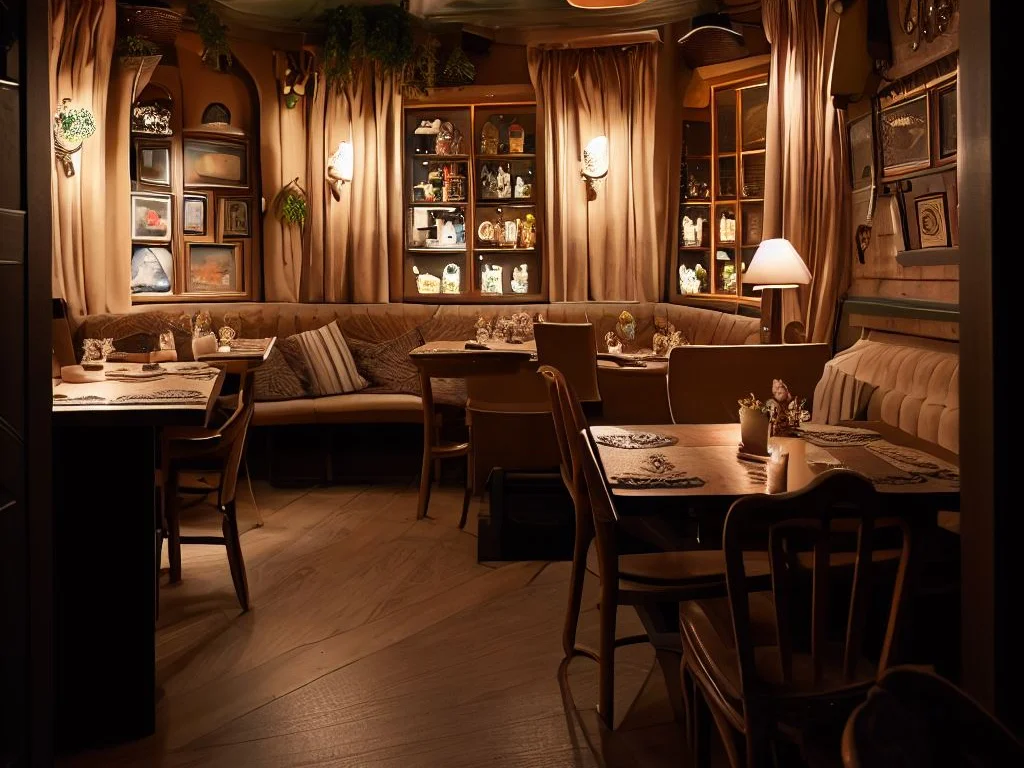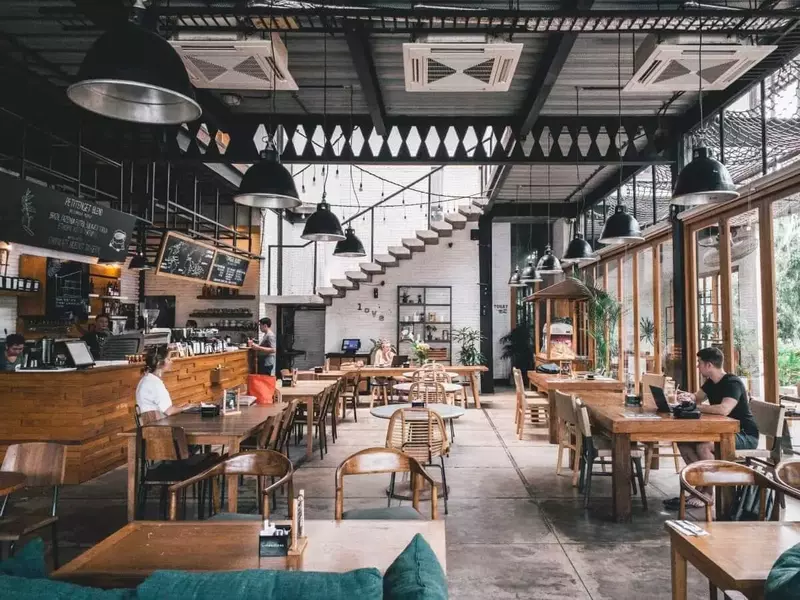Marketing Your Restaurant to the Canadian Audience

Canadian tastes are changing – and, therefore, your restaurant marketing strategies must adapt, too. This highly multicultural country shows immense diversity across the landscape: from the urban taste-making centers of Toronto, Montreal, and Vancouver to the more traditional regions of the northern provinces, marketing your restaurant to the Canadian audience hinges on your location, demographics, and specialties.
Depending on your niche, you may be competing with major chains, as well as local competitors and smaller franchises. As such, you must have a multimedia restaurant marketing plan that embraces the changing landscape of restaurant marketing in Canada, including online marketing campaigns and tried-and-true traditional marketing.
This is especially true if you’re starting a new restaurant, where you need to attract new customers quickly to build a steady cash flow.
In this restaurant marketing guide, we’ll discuss how you can turn curious tasters into loyal customers through these powerful restaurant promotion ideas, which span print, social media platforms, and old-fashioned personal connections to create a holistic marketing campaign.
Traditional Marketing: The Classics Never Fade

With the explosion of social media marketing campaigns, you may believe that you can slash traditional strategies from your marketing budget, but it’s just not true: 86% of Canadians still read the newspaper every day, and 88% listen to the radio on a regular basis. This means that you’d be remiss to miss out on these more familiar restaurant advertising ideas.
Billboards, too, are still a great advertising tool, especially given Canada’s reliance on cars to traverse the large stretches between major cities. You can even develop digital billboards with all the same capabilities of more low-tech offerings but allow you to share space with other companies to cut down on costs.
These old standards remain a powerful restaurant marketing tactic in the digital age, particularly in Canada, so it’s essential that you encompass these platforms when building brand recognition for all demographics.
Print Media
Local newspapers and magazines are an excellent way to get your name out there, and their marketing campaigns are often surprisingly affordable. Place an ad on the business page of your local paper or regional magazine, advertising your menu items and providing links to where potential customers can find your restaurant online.
In large tourist areas, consider providing your menu to rest stops and travel plazas, as well as advertising in the free brochures and travel guides available to those passing by. They may provide free advertising by raving about their meal to friends back home, who will keep you in mind when traveling through the area.
If you have a talented writer on staff, you might try writing a food column; this establishes your authority in the restaurant industry and encourages customers to try your restaurant the next time they are in your area.
When designing advertisements for your restaurant marketing plan, it’s critical that you provide good “food porn,” meaning that your food is well-plated and shows up nicely.
A professional food photographer can be a vital asset in this mission, as they will know how to stage and edit photos so that the vibrancy and detail of your menu items really wows potential customers.
Radio and Television
Radio and television is all about sound and visuals, and it can be difficult to find the exact blend of music, voiceover, and imagery that will captivate customers.
However, reviewing successful marketing campaigns from well-known entities can give you an idea of what to include in your own restaurant marketing strategy. For example, consider McDonald’s “I’m Loving It” or Subway’s “$5 Footlong” jingle to see what develops customer loyalty over the long term.
Short, upbeat catchphrases will capture more attention than a long spiel of your company’s virtues; keep your jingle to no more than a line or two so that it’s easy to recite.
You’ll also want to use energetic, evocative words like “crave” or “satisfy.” For television, intersperse images of people enjoying your food with close-ups of the items themselves, as this will harness the power of “monkey see, monkey do.”
You can also collaborate with local celebrities or influencers, whether that is a hometown hockey hero or a local news anchor. This utilizes the halo effect: if customers like that individual, they’re more likely to seek out your restaurant.
Direct Mail

A direct mail campaign can be a powerful restaurant marketing strategy for local businesses if done correctly. You may consider mailing copies of your menu to customers so that they know exactly what to expect when stepping into your restaurant, as well as a photo of the exterior of your business so that they can identify it by sight.
Advertising your loyalty program and any special promotions will also entice new customers to give you a try; you could even mail a loyalty card to each household so that they can get started on earning benefits without even asking.
Seasonally appropriate promotions also do well, as it identifies this as a time-sensitive event that they must jump on to enjoy. For example, you may run a Canada Day or Thanksgiving promotion for seasonal foods or drinks, whether that is maple-glazed hot wings or brown sugar ham.
Digital Marketing: The Modern Mainstay
When it comes to restaurant marketing ideas, you need to consider the younger generations, often called digital natives: these customers search for businesses almost entirely online, and they respond well to digital marketing.
Search engine optimization, well-designed social media accounts, online reviews, and online ads are all essentials to attract customers from this target audience.
Website and SEO

If you have a responsive and mobile-friendly restaurant website, you’ll be miles ahead of other businesses, who often do not consider this key component of restaurant marketing.
Your website should include an easy-to-read menu – not simply a scanned version of your printed menu – contact information and integration with any food delivery sites you use.
Online ordering is a must nowadays, as younger generations don’t want to pick up the phone and call to place an order. You can also create an online reservation service for dine-in customers; this not only can encourage repeat customers because they enjoyed their in-person experience, but it also improves logistics for your staff.
In addition to your own website, you should consider search engine optimization when crafting restaurant marketing strategies, particularly in regard to local SEO. Any form of search engine optimization focuses on improving your rankings on search engine results
You must build a strong online presence that identifies you as a local restaurant, as when customers search for local businesses, search engines will prioritize those sites that have a clear service area.
The first step is to optimize your Google Business Profile. This business page includes your address, phone number, website, hours of operation, photos, and reviews; many restaurants also utilize their convenient online ordering system, which allows you to upload an online menu that is then integrated with either your own ordering system or that of the food delivery sites you use.
Social Media

Your social media accounts allow you to connect directly with your target audience, which improves customer retention by building a personal connection. This requires a good understanding of the different platforms and what does well on each site.
Here’s a simple guideline for the types of content you should post on each of your social media pages, as well as the types of ads you can run on each site.
Instagram: Visual content does excellent here. Show people eating and enjoying your food: images with faces in them are 38% more likely to receive likes and 32% more likely to get comments. You might share behind-the-scenes images of your kitchen, along with short narratives about your favorite healthy food recipes or what it’s like to be a restaurant owner.
Instagram ads look much like organic posts but will have a “Sponsored” tag and a call to action button at the bottom that redirects to your restaurant website.
Twitter: This site is for short, snappy tweets and appealing visuals. You can advertise upcoming events, run social media contests for a free meal, and list new promotions and specials so that users are compelled to come in.
Facebook: Facebook does well for more long-form content with plenty of pictures. When opening a business page on this platform, you have another opportunity to host your menu online and share reviews from satisfied customers. Because Facebook owns Instagram, it’s quite easy to crosspost content from these two platforms.
You can also sign up for Facebook location ads, which will be shown to Facebook users in your area.
TikTok: As this is quite underutilized for restaurant marketing – in fact, your local competitors may never have even considered it – you have a golden opportunity to stand out amongst your peers.
TikTok is all about short, compelling videos, which gives you a variety of content options to try. You could show videos of your team at food festivals, get video testimonials from your most loyal customers, or share a quick recipe that viewers can try at home.
Medium: Medium is little-known in the restaurant industry, and as such, it’s ripe for new and fascinating restaurant marketing initiatives. This is a hybrid between social media platforms and personal blogs, with different publications that cater to specific niches.
You don’t need to create your own profile in order to benefit from a marketing campaign on Medium. Many food bloggers have found their home here, and you may collaborate with one of them to give a review of your business or share their favorite of your menu items. It’s one of the most unique restaurant advertising ideas that can get people talking about you across the web.
Email Marketing

When considering restaurant marketing ideas, you need to find a way to drum up repeat business through regular engagement. Email marketing campaigns provide a great way to keep you fresh in the mind of repeat customers so that they feel enticed to come in again.
Consider writing regular newsletters that share upcoming events at your business, detail new promotions, and discuss updates to your menu or advertising.
You can also build a subscriber list that is segmented for personalized content. For example, you may split your list into fellow restaurant professionals, community contacts, and customers in order to deliver unique information that matters most to them.
Online Advertising
There are numerous platforms for online ads, each of which can be of great value depending on your target audience.
What matters most, however, is geo-fencing: only showing your ads to those who are in your service area rather than attempting to attract customers who live hundreds of kilometers away. This not only cuts down on your marketing campaign budget but also allows you to run localized promotions which appeal to your user base.
When setting up geo-fencing, you can develop different advertisements depending on multiple geographic barriers. For example, someone within one kilometer of your store may see one that invites them to stop by on their way home from work, while you might encourage customers to visit the next time they’re in town if they are more than ten kilometers away.
Another essential component of a digital marketing campaign is retargeting; this refers to advertising to those who have already interacted with your business in some form, whether that is visiting your website or signing up for your mailing list. These advertisements might say something like, “We miss you!” or “Hungry again?” The more personalization you can add to these messages based on previous interactions, the better.
When it comes to restaurant marketing ideas, Google Ads is one of your greatest allies. These pay-per-click campaigns allow you to identify a target audience, utilize geo-fencing, and develop retargeting campaigns that identify repeat clients who may just need a small nudge toward their next meal. You can also easily track the progress of your campaigns so that you can refine as necessary.
Local Marketing: Embracing the Community

No restaurant exists in a vacuum: whether you’re in a huge metropolis like Ottawa or a smaller city center like Halifax, you’re surrounded by a community full of potential customers.
By building a strong network of nearby organizations and businesses, you can boost your reputation as a local restaurant who cares about the community, as well as cultivate repeat business from those who appreciate your commitment to the town or county’s culture.
Local Events and Sponsorships
The best way to get involved in the community is to get involved with local events, such as fairs, festivals, and farmer’s markets. Build events into your restaurant marketing plan by analyzing calenders of nearby events and securing a booth there, where you can hand out free samples, provide printed menus, and direct customers to your menu online.
While outdoor events are most popular in summer, this doesn’t mean that your collaborations have to end in the cold, snowy months.
Many restaurants have found great success in creating coupons or vouchers for hockey teams, such as offering small menu items when the home team wins or earns a certain amount of points. Sponsoring a local hockey club in this way integrates you into the community – and it can earn you new customers in numerous age demographics.
Collaborations
You can drum up more business by supporting other local businesses and nonprofits in their own efforts to get clients.
For example, many libraries host reading drives during the summer for students; you could offer a free meal to the studious youngster who reads a certain amount of books. If you’re a cafe, you might think about providing coffee thermoses in a nearby tire shop so that customers waiting for a tire rotation can enjoy a complimentary drink. Not only will this build goodwill, as you’ve provided a low-cost but useful service, but it will also boost the profile of the tire shop, as it will help them appear more high-class and service-oriented.
Cross promotions are a great opportunity to connect with the community and build a network of supporters. You might share advertising space with a florist around Valentine’s Day, encouraging customers to get a beautiful bouquet for their sweetheart, then treat their loved one to a special meal.
The opportunities are endless, and it only takes a bit of ingenuity and networking to develop unique but highly effective restaurant marketing strategies.
Loyalty Programs

Regular customers can be some of the best free advertising imaginable: they obviously love your service, and they’ll be more than happy to spread the good word if they know that they’ll be rewarded for sharing.
Loyalty programs like punchcards for free food after a certain amount of items purchased are an old standby for good reason: they work. Places like smoothie shops and cafes might provide a complimentary drink after 10 or 15 previous purchases, while fast food diners could create a rewards program for a discount after a certain amount of money spent.
Think big about holidays and consider providing special experiences to your most loyal customers. For example, you could create a raffle where a certain dollar amount is an entry for a grand prize of a gift basket or a voucher for a meal. If you’re a high-end restaurant, your marketing plan could include one exclusive meal after hours, where a lucky customer can bring a loved one and have the whole restaurant to themselves.
Word-of-Mouth
Online reviews aren’t just for feedback: they are a wealth of free advertising for your business. Encourage your customers to leave reviews on particular review sites, like your Google Business Profile or Yelp, and be sure to respond to them, whether they are negative or positive.
You can utilize positive reviews in your advertising materials, including your website, direct mail flyers, and newspaper ads. Be sure to provide coherent and short snippets, only a sentence or two. For digital marketing, provide a link to the specific review on Google or Yelp.
It’s important to note that if you’re incentivizing reviews through discounts, you should not make the incentive conditional on positive feedback.
Regarding negative reviews, you can spin this into free advertising should you respond thoughtfully and politely. Focus on the facts of the interaction, avoid slander, and be sure to apologize that they had a negative experience. You should also avoid simply asking people to contact you privately, as this may appear to other readers that you’re trying to hide something.
Branding: Crafting a Memorable Identity

As you review your restaurant advertising ideas, you should develop coherent and consistent branding. What makes your business special? Why are you a mainstay in the local restaurant scene? Incorporating the answers to these questions throughout your restaurant marketing strategies will help your business develop a strong personality.
Brand Story and Values
On your website, tell the story of your company’s founding and what you intend to achieve through your food. Write about your values as a business, whether that is providing healthy food to the community or preserving the cultural heritage of your region.
Visual Identity
Ensure that you have a high-quality logo that remains the same across all your materials. Pick a color scheme that fits with your cuisine, whether that is a warm, earthy color for a coffee shop or bright white and blue for a Mediterranean restaurant. You should strive to incorporate these chosen colors in your interior design as well so that customers feel that they are stepping into a place that matches your advertising.
Voice and Messaging
Every business has a voice: good restaurants strive to refine this so that customers can identify their unique personality and style across all communications. Use similar wording throughout your advertising, and find a good spokesperson who you utilize in all audio recordings. Repetition is the key to good restaurant marketing, as it builds consistency.
Employee Training
Your staff is the physical embodiment of your brand, so they should align well with your brand ethos. If you have a youthful, fresh brand, then hire employees of all ages who have high enthusiasm and naturally bubbly personalities. For a refined restaurant, look for staff who carry themselves with dignity and are able to retain a calm, mature demeanor.
This also includes how they interact with customers; those who visit your restaurant should know what to expect, whether that is a familiar greeting or some friendly chatter before they sit down for a meal. This builds customer retention, as your diners will enjoy a sense of comfort and familiarity each time they visit.
Tailoring to the Canadian Audience

While all of these are great ideas in general, you’re targeting a specific group: Canadians. This means that you need to consider how to identify yourself as a business that recognizes and appreciates the unique flavors of Canadian culture when developing your restaurant marketing.
A key component of this is thinking about Canadian cultural events that are specific to your region. Most major cities have their own festivals and holidays, such as Quebec Independence Day (also known as Saint Jean Baptiste or Discovery Day in Yukon.
These celebrations often come with their own food traditions, which you can incorporate into a seasonal promotion. For example, Quebecois restaurants might provide brown sugar pie or maple butterscotch fudge during June, while Alberta joints could run a promotion for discounted meals for kids on Family Day in February.
Canadians love to eat local, so you might highlight the locally-sourced ingredients on your menu to identify your business as one with a finger on the pulse of your region. Fresh catches on either coast are always popular, and you can also partner with nearby farms to get your meat and vegetables from nearby. Be sure to advertise this on your menu so that diners know where their food is coming from.
Measuring Success: Analytics and Adjustments

Every marketing plan needs to include space to analyze and adjust as necessary; thankfully, there are a variety of helpful tools to keep track of your progress and identify areas of concern.
Google Analytics
Google Analytics allows you to monitor your website traffic and conversion rates, including by page. You can see how many people are clicking on your calls to action, how long they spend on each page, and whether they leave without interacting with your site, which can provide you with vital details on how to improve or what to better emphasize.
Social Media Metrics
Nearly every social media website provides metrics for users, including engagement and reach. When running ad campaigns, you can also identify your return on investment, which can help you learn which campaigns are working best for you and which might need to be adjusted.
Customer Feedback
Customers are often a wealth of suggestions on how you can boost sales if you listen carefully. Whether that’s through online reviews or in-person discussions, you can learn things like how they heard of you, what first encouraged them to visit, and what they enjoyed most about their experience, which can help you identify what you’re doing well and how to improve.
Solicit feedback by encouraging guests to leave reviews, which you can then analyze for common threads and adjust accordingly.
Conclusion

The Canadian food landscape is always changing, as are the potential restaurant marketing ideas you can implement. Just as restaurant owners try out different menu options or tweak recipes, continue to experiment, learn, and evolve your marketing plan as you find what works best.
A holistic and adaptive approach to restaurant marketing allows you to shift with the tastes of customers and capture more of the local market space – and more loyal diners who will come back again and again.
References and Further Reading
“Similarities and Differences in US and Canadian Restaurant Marketing Strategies: A Cross-Border Analysis of Menu Offerings:” For those buying a restaurant in Canada to expand their reach from the US, this academic article helps explain the unique dimensions of the Canadian food scene and how your marketing plan should change when you cross the border.
“Industry Challenges Shaping Canada’s Restaurant and Foodservice Industry in 2023:” Restaurants Canada shares vital information about recent consumer trends, which can help kickstart your brainstorming for restaurant marketing ideas.
“Good Practice Guide on Online Consumer Ratings and Reviews:” This resource by the Organisation for Economic Cooperation and Development provides helpful guidelines on how to effectively utilize consumer review sites.
“Google Analytics Guide:” Hosted by Google itself, this will teach you how to set up your Google Analytics page and parse the statistics provided.
“Develop a Digital Marketing Plan:” While this guide is from abroad, its helpful advice helps outline the benefits, drawbacks, and strategies necessary for a successful digital marketing plan applicable to restaurants and businesses across the world.
Frequently Asked Questions
What Is Unique About the Canadian Marketplace?
Canadians are very value-oriented, seeking promotions and deals. They have a higher internet usage than Americans, but they also prefer in-person experiences, meaning that community building and networking is essential for restaurant marketing. Canada is culturally diverse, so you need to be familiar with the local culture and its specific demographics in order to market effectively.
How Much Should I Spend on Marketing Overall?
Your marketing budget is usually a percentage of your revenue rather than a concrete number. The Business Development Bank of Canada explains that Business to Consumer (B2C) businesses, like restaurants, should expect to spend between 5% to 10% of their revenue on their marketing; this will then be segmented by channel based on the unique mix of strategies you decide upon.
How Much of My Marketing Budget Should I Devote to Each Strategy?
This really depends on where you are and the demographics you are trying to attract. In a smaller market, you might center direct mail, digital billboards, newspaper advertising, and community collaborations; in a more metropolitan region with younger demographics, digital advertising, partnering with influencers, and social media accounts might be a better use of your money.
What Are the Key Components of a Successful Marketing Plan?
You should keep these elements in mind when developing your strategy:
- Well-defined promotional deals, including their expiration dates
- Clear, consistent message across all channels
- Good use of customer feedback and reviews
- Appealing visuals appropriate to your brand
- Consistent and prominent contact details
- Localization and geographic targeting
- A strong call to action
Analyze each of your marketing tools for these elements and strive to develop a strong brand voice that carries through all of your efforts.
Why Might an Advertising Campaign Fail?
There are a variety of reasons you might find poor engagement with a campaign, including:
- Using the wrong platform for your target audience
- Not running the campaign for long enough
- Targeting the wrong demographic
- Having no clear call to action
Thinking carefully about your restaurant marketing and allowing proper time for analysis can help you avoid the major pitfalls that might reduce the effectiveness of your campaign.







